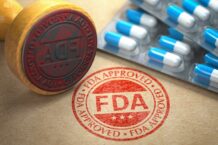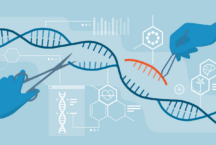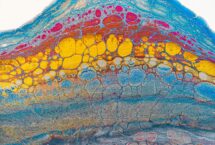

insights
Critical Considerations to Advance Gene Therapy Products for Rare Diseases
The U.S. Food and Drug Administration (FDA) Center for Biologics Evaluation and Research (CBER) Office of Tissues and Advanced Therapies (OTAT) presented the next installment of their virtual town hall series on Tuesday, February 7, 2023, with a focus on clinical development considerations to advance gene therapy products in rare disease. Hosted by an FDA moderator and a panel of three agency experts from the Division of Clinical Evaluation and Pharmacology/Toxicology (DCEPT), the town hall format was designed to foster engagement with product development stakeholders with the mutual goal of advancing product development.
While there were multiple themes reflecting the agency’s current thinking discussed during the town hall, the following resonates closely with the type of strategic planning considerations Halloran routinely navigates with sponsors. Themes include the use of external controls in clinical development, how the agency considers the prospect of direct benefit, the use of healthy volunteers in early-phase gene therapy studies, and requirements for safety monitoring.
Theme 1: Use of External Controls in Clinical Development
Randomized, concurrently controlled trials, with a blind usage of placebo or active controls, are the gold standard because they employ suitable methods to allow freedom from bias. A no-treatment control is less preferred because it is inherently unblinded. The use of external control, such as a natural history study, may only be appropriate in certain situations, such as for rare and serious conditions.
An example of a scenario where the agency might accept an externally controlled trial as primary evidence of effectiveness for approval of a gene therapy product is Zolgensma, which received FDA approval for spinal muscular atrophy (SMA) in 2019 based on two single-arm externally controlled trials. This outcome was possible because the disease course was highly predictable, could be objectively measured and verified, the expected clinical benefit was large, the treatment was self-evident, and the clinical outcome was unlikely without intervention. Most situations will not meet this high threshold even if the disease is rare and serious; therefore, externally controlled study designs are generally not recommended.
For the development of gene therapy products in diseases that are rare and serious with a high potential for clinical benefit that is objectively measured, it is critical to conduct robust natural history studies to document a well-characterized and predictable disease course and because the data may be acceptable to use in a future single-arm externally controlled trial.
FDA’s CDER, CBER, and Oncology Center of Excellence (OCE) divisions recently released a draft guidance, “Considerations for the Design and Conduct of Externally Controlled Trials for Drug and Biological Products,” that provides the agency’s current thinking on the possibilities of using historical controls, concurrent controls from a setting outside the prospective single-arm trial, and real-world data as controls.
Theme 2: Prospect of Direct Benefit (PDB)
For sponsors developing gene therapies for rare diseases in pediatric populations, in addition to demonstrating safety, there are additional safeguards that are required to be met prior to initiating a clinical study in children covered under 21 CFR 50.52 subpart D. Evidence must be provided that administration of the study agent provides a prospect of direct benefit (PDB). This requirement may be straightforward for some sponsors based on the indication; however, a straight path is not always applicable for a multitude of reasons.
Given the potential for serious adverse reactions that may be acute, long-lasting, or permanent from gene therapy, the agency wants to ensure the study population selection has the following characteristics:
- Greatest opportunity to derive benefit
- Ability to provide consent
- Benefit-risk analysis is justified
Furthermore, the demonstration of PDB is required before pediatric studies can be initiated. The demonstration of PDB is often demonstrated through both nonclinical in vivo studies and initiation of clinical development in adult subjects. But if there is no appropriate adult population to establish safety and proof of concept (POC) and the PDB is reliant upon the nonclinical in vivo data, children may be the first subjects in early-stage clinical studies.
In this instance, the oldest pediatric population should be enrolled first. There are instances in which an in vivo animal study cannot be completed when a relevant disease model is not available. Reliance upon nonclinical in vitro data is unlikely to demonstrate the PDB for this vulnerable patient population. Under these circumstances, presenting the preclinical data package the sponsor believes confers PDB and early-stage pediatric enrollment strategies should be discussed with the agency prior to an Investigational New Drug (IND) submission.
Theme 3: Healthy Volunteers and Safety Monitoring
The use of healthy adult volunteers (HVs) in an early-phase gene therapy study may be acceptable, especially for an early-phase trial for a product that has a well-understood safety profile and a short duration of action. But this is not so common for most gene therapy products since there is a higher probability of long-term or permanent effects, in addition to risks of any invasive administration procedures. This leads to an unfavorable benefit-risk profile for HVs in gene therapy trials.
Safety monitoring in a gene therapy clinical trial is critical and sponsors need to establish a comprehensive safety monitoring plan. Because of the inherent nature of the one-time treatment regimen, all safety signals need to be captured through a thorough monitoring plan and dedicated follow-up processes. Stopping rules need to be in place and patients need to be followed carefully, especially for the first few weeks after administration.
The appropriate length of gene therapy clinical trials is extremely hard to predict and are individualized on a case-by-case basis, so understanding the natural history of the disease is often helpful for sponsors. For efficacy of a product, a clinical trial will need to demonstrate a clinically meaningful effect in how patients feel, function, and survive. The duration of the clinical trial that is needed to show a clinically meaningful effect will differ between different products and conditions. Overall, a shorter clinical trial might be sufficient to demonstrate the efficacy of a product that progresses rapidly compared to one that progresses slowly or has a latency period between treatments. The use of validated biomarkers as surrogate endpoints may also help to shorten a clinical trial.
Conclusion
Gene therapy developers for rare diseases are often up against major time and cost challenges due to the complexity and uncertainties of their clinical studies. But effective strategies, key considerations, and a timely understanding of the agency’s current thinking are critical for sponsors to enable study success.
Learn more about Halloran’s Regulatory expertise in Special Designations, Investigational Applications, and Health Authority Meetings.
Contact our team today.




